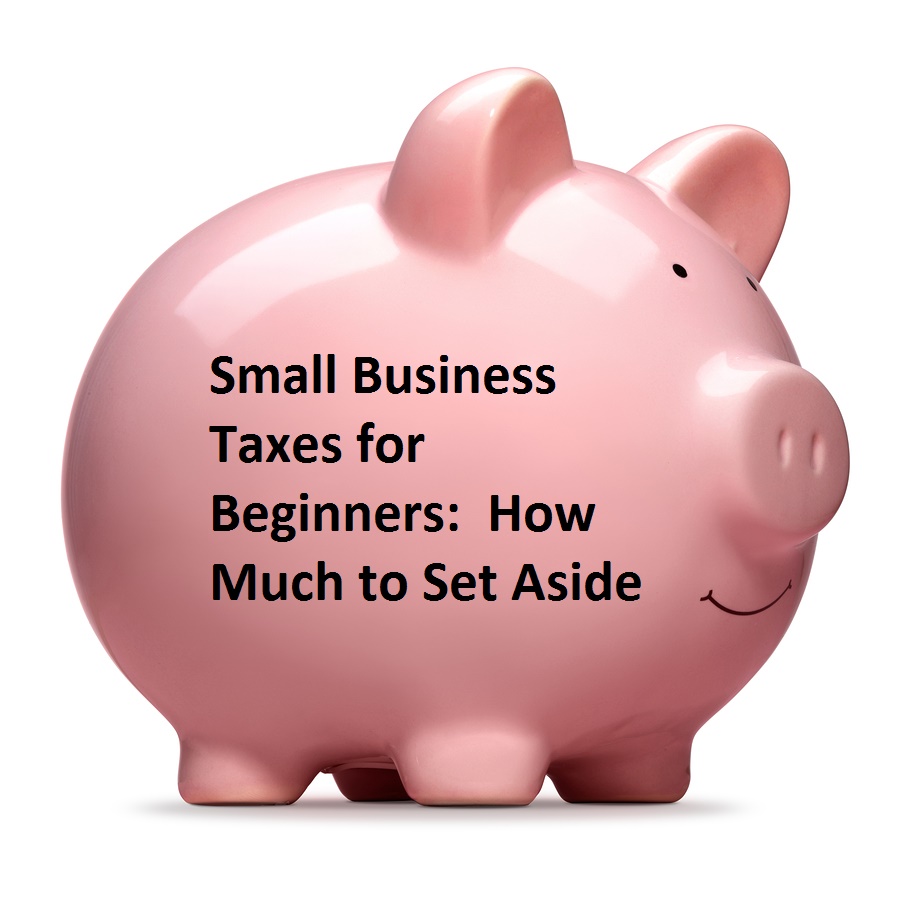
When you start a new business, one of the hardest things to figure out is how much money you need to set aside to pay your taxes.
One question I hear all the time is: How much should I put away to pay my business taxes? If you’ve been in business for a few years, you probably have a good feel for how much you take in versus how much your expenses are and what your overall tax bracket is. After a while, you’ll be able to make estimated tax payments with fairly good accuracy. But if you’re just starting out and you don’t have a lot of experience, it’s really hard to guess. This post is for you.
Starting with the very first payment you receive, put away 10% of your revenue. Ideally, you will set up a special savings account at a bank to escrow your taxes, but you can use a piggy bank at home for all I care. Set aside 10% of your revenue.
But I thought my self-employment taxes were more than that? They are. Generally, self employment taxes are 15% of your income, and then you pay your regular tax rate on top of that. If you’re in the 25% tax bracket, the taxes on your business are 40%. This puts people into a panic—most people don’t pay 40% of their revenues, you have to back out your expenses first.
So shouldn’t I put away 40% of my profit? Yes, after you’ve got your business settled in and running smoothly. In the beginning, most start ups lose money, so your business taxes might be zero. You could even reduce your other taxes by reporting a business loss. Setting aside the 10% is your safety net. 10% is easy. 10% is a number you can live with. Most importantly, 10% might save your life.
You were right, I had a loss my first year. Can I spend the tax money that I had set aside? No. You’re going to add to it the next year so that you’ll have enough money to pay taxes then.
What if I have a loss for my second year of business? Keep setting aside 10%. There are basically three things that could happen:
Eventually your business will start making a profit and you’ll be glad that you set aside some money to pay your taxes.
Your business will never make money, so the IRS will decide to call your business a hobby and you’ll have to pay back the taxes you avoided by claiming business losses. We don’t want that to happen! But again, you’ll be glad you have that money set aside.
Your business doesn’t make any money and you’re smart enough to get out before the IRS declares you to have a hobby. Now you’ve got a nice little savings account started.
The 10% rule is a win/win situation for you no matter what.
I make really good income as a contract laborer and I don’t have any expenses. What if I expect to definitely make a profit my first year? A good example of this situation would be an independent IT contractor; a lot of these folks are profitable from day one. If you’ve got a similar situation, I’d hold back 25% at a minimum, 30% is better. If you’re married and you’re adding your income onto a spouse’s earnings, I’d put away 40% right from the start. If you anticipate over $100,000 of income your first year, you should sit down with a professional and do some strategy planning. Your self-employment taxes will actually go down after $106,800 but you could be in a higher overall tax bracket.
Face it, if you’re making over $100,000 a year, you can afford to pay the consulting fee to an accountant. By the way, you’ll write that off as a business deduction.
Okay, so I set aside 10% of my revenue for my business taxes the first year but it wasn’t enough. Now what do I do? First, be glad that at least you had the 10% set aside. Now you’ve got some figures to work with for next year. Based upon your tax return, you can now compute a percentage for you to set aside. Maybe it’s 20%, maybe 30%. Once again, you’ll set aside a percentage of your revenues. You’ll make estimated tax payments every quarter based on what you owed last year. Let’s say you had a balance due of $4,000 last year, then you’ll make quarterly estimated tax payments of $1,000 each this year. You’re still putting money in the bank for your taxes and you’ll pay the estimated taxes from your set-aside fund.
I see a lot of people with small businesses get into tax trouble. They scrape to get ahead and then when success finally comes, the tax bill is a big slap in the face. Success is sweet, but there’s a price. If you start from day one setting aside a portion of your revenue for taxes, you’ll be prepared.
